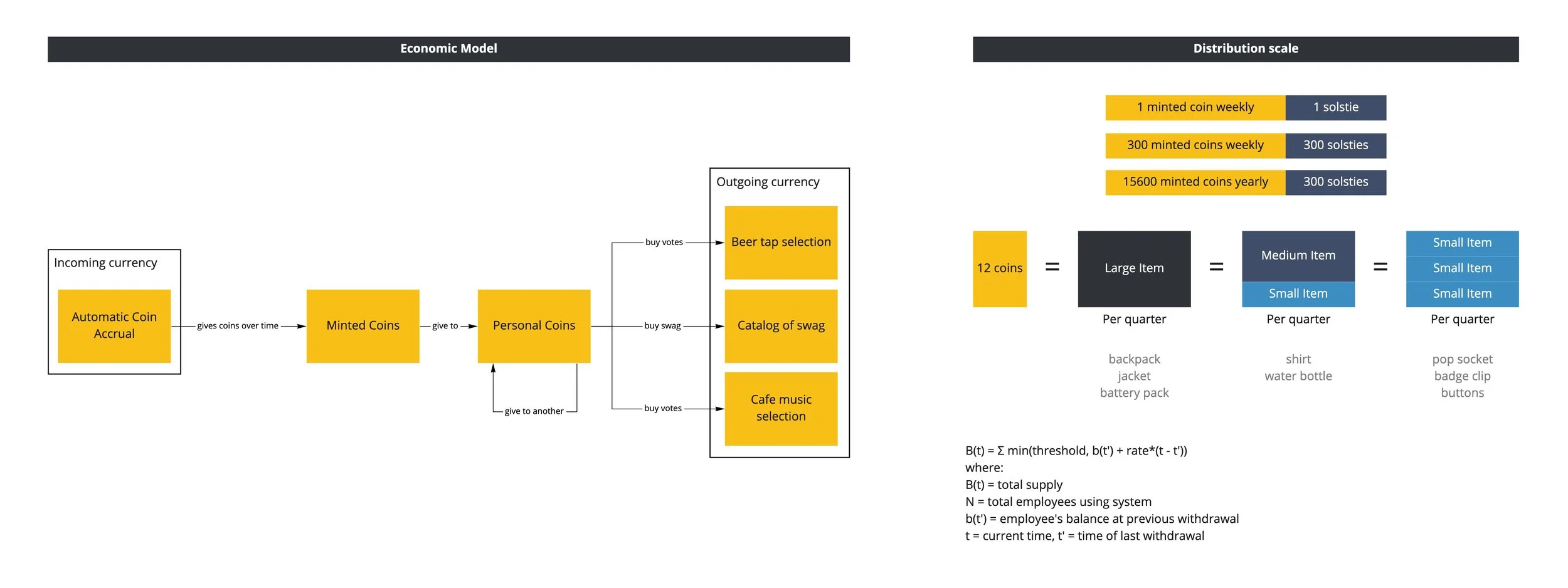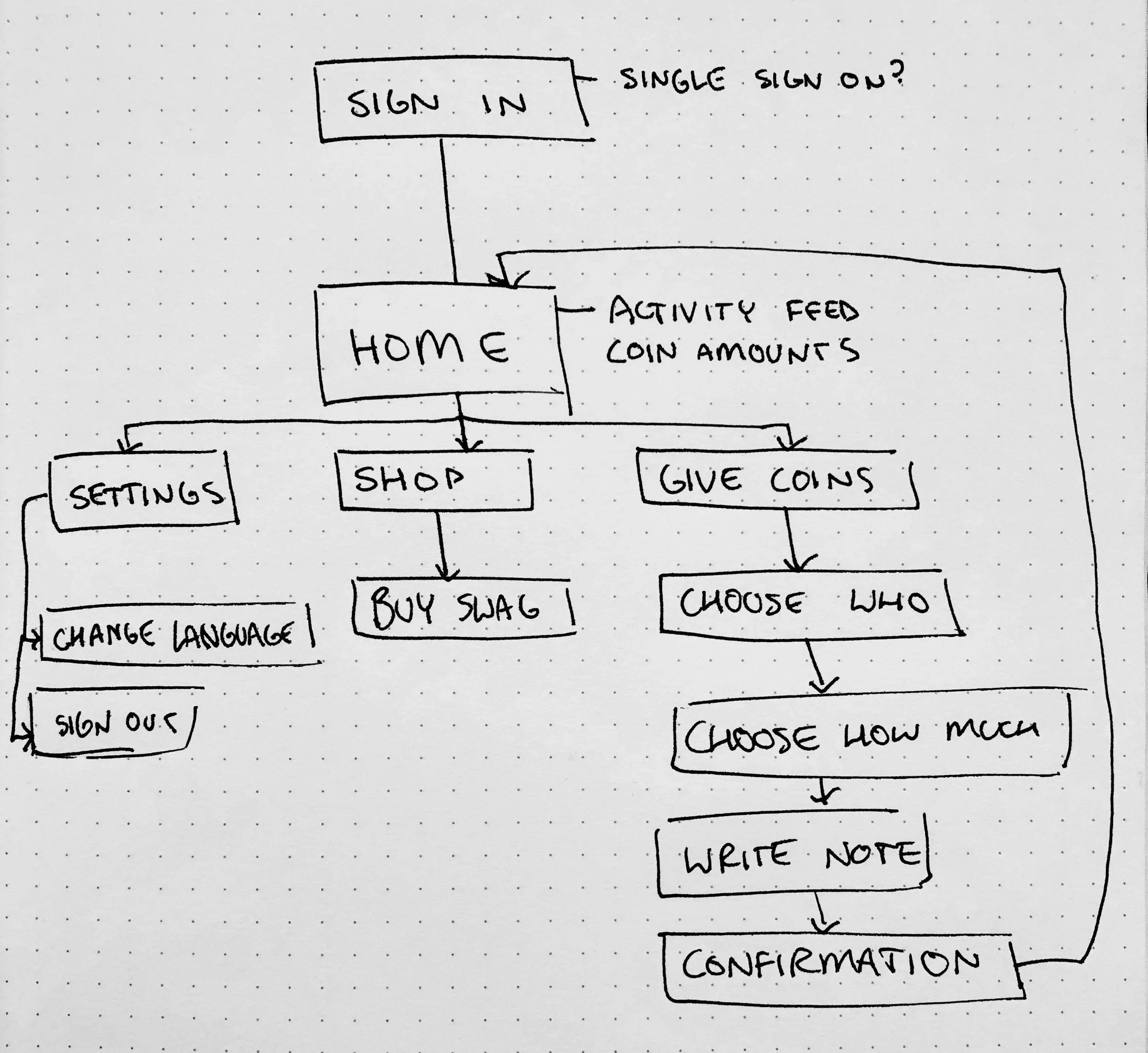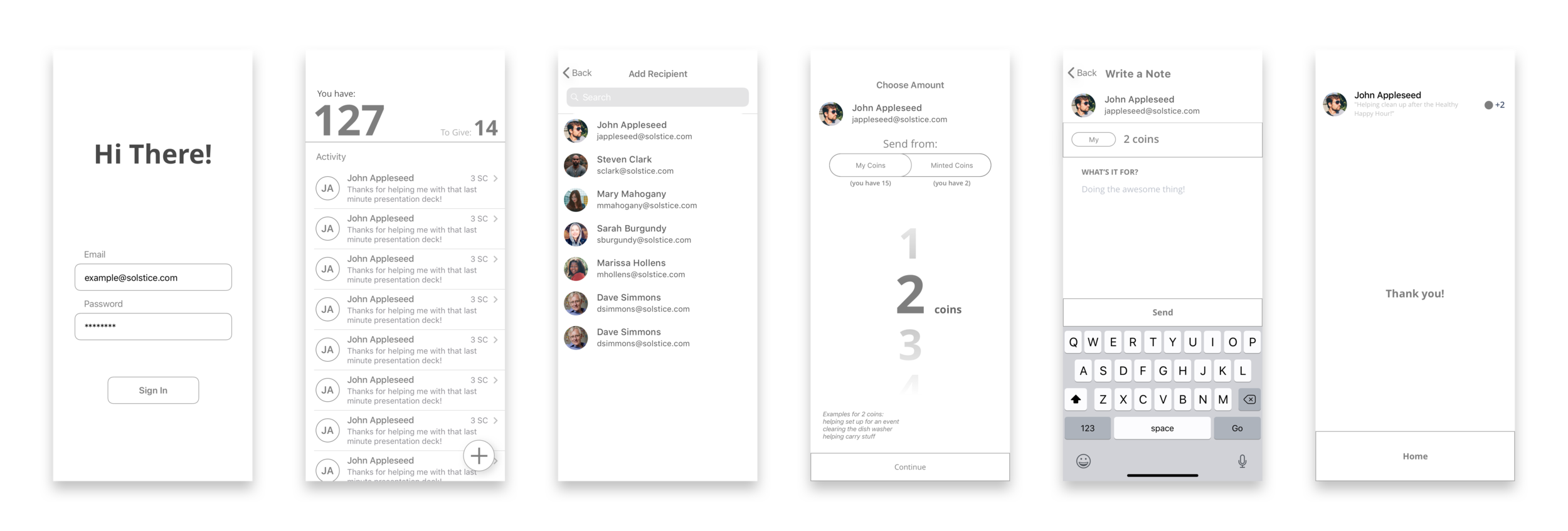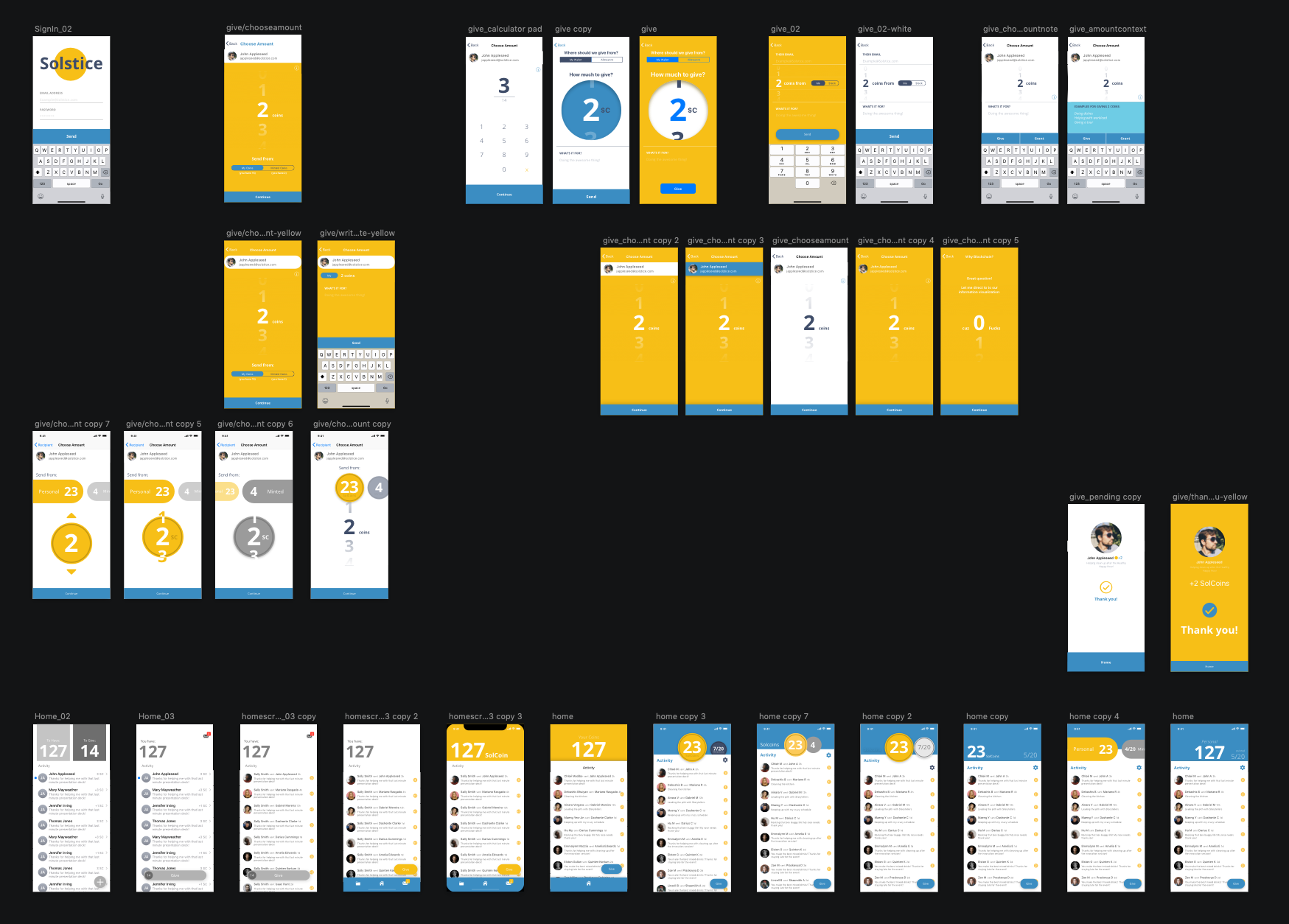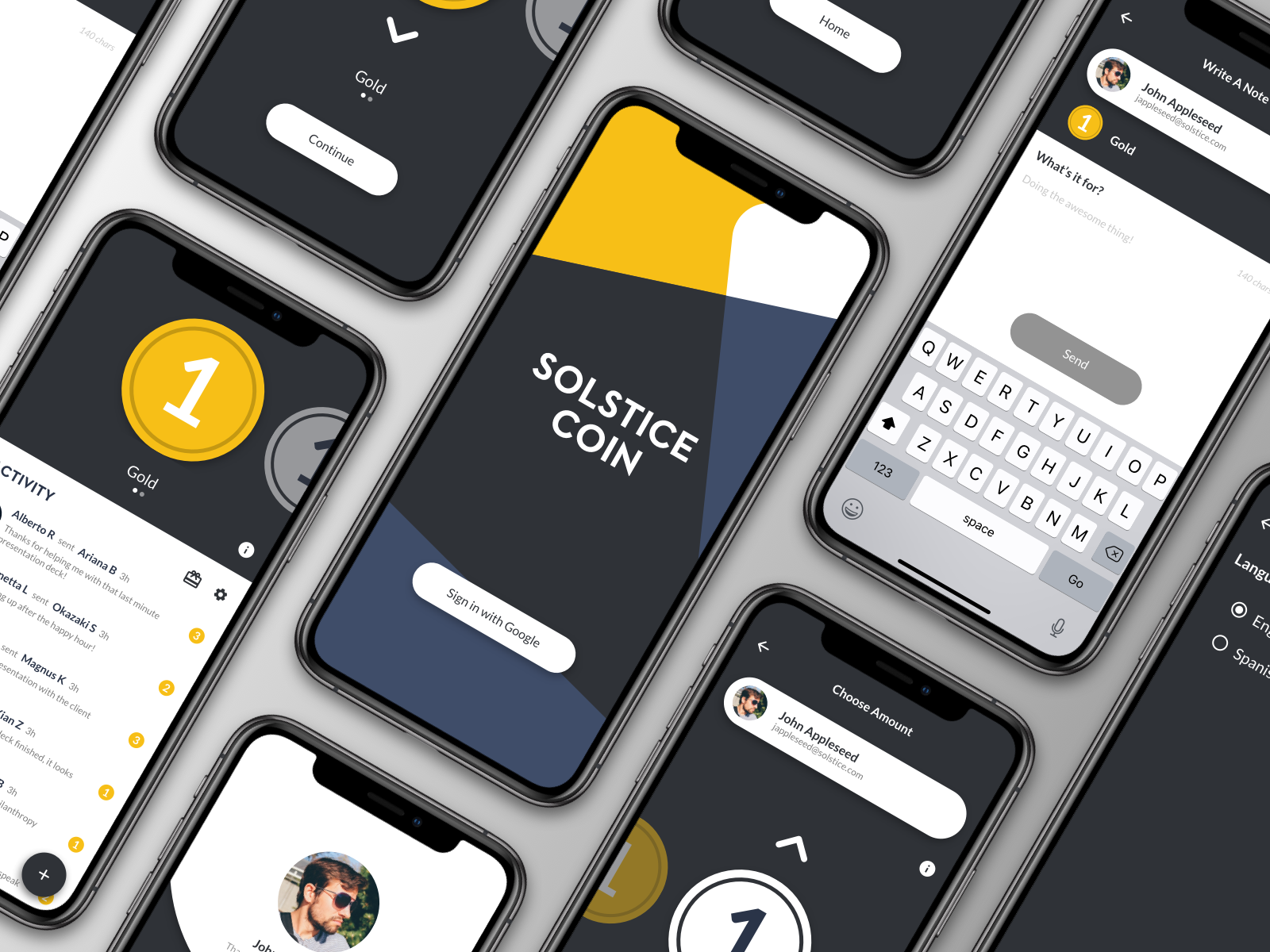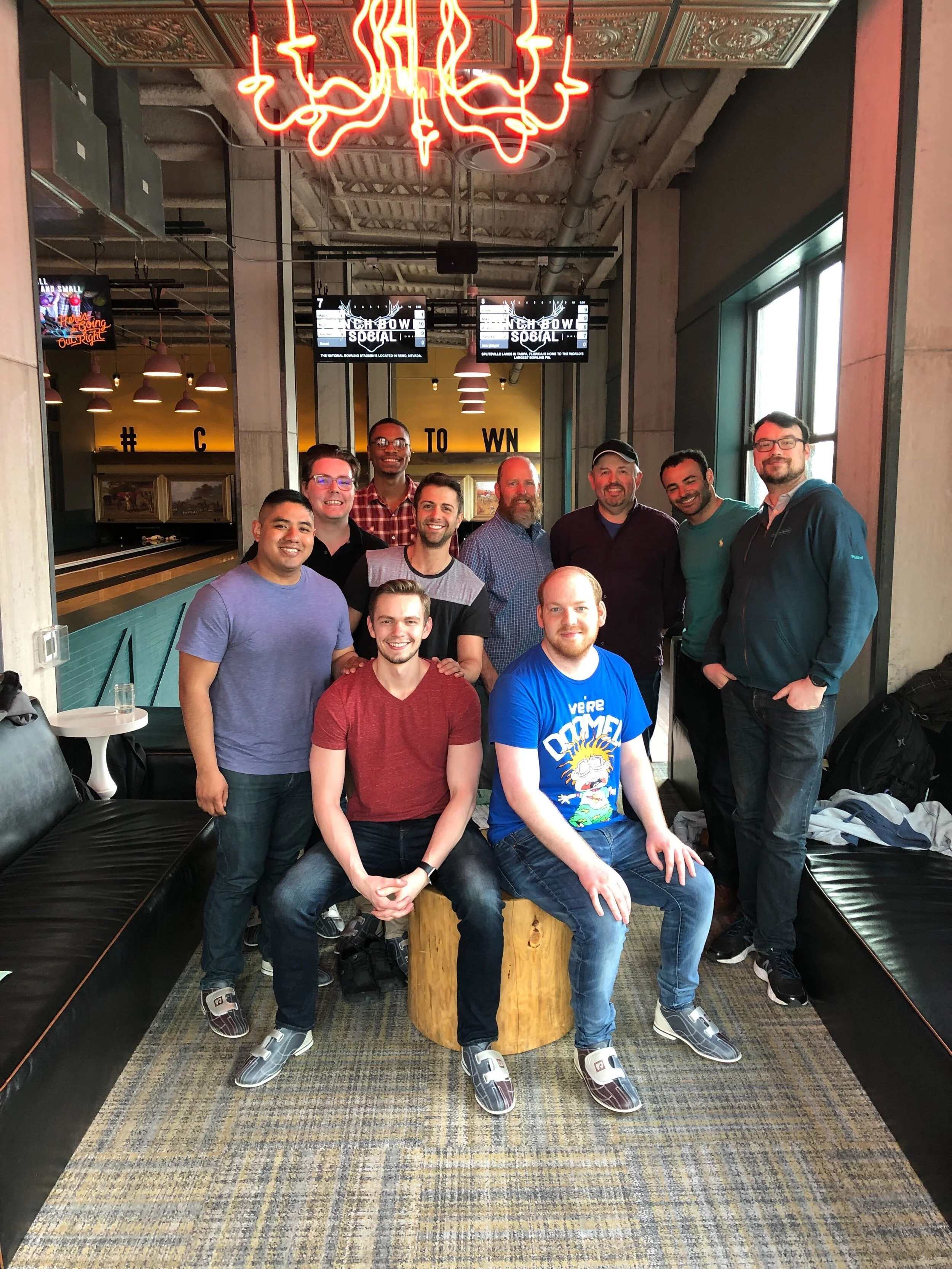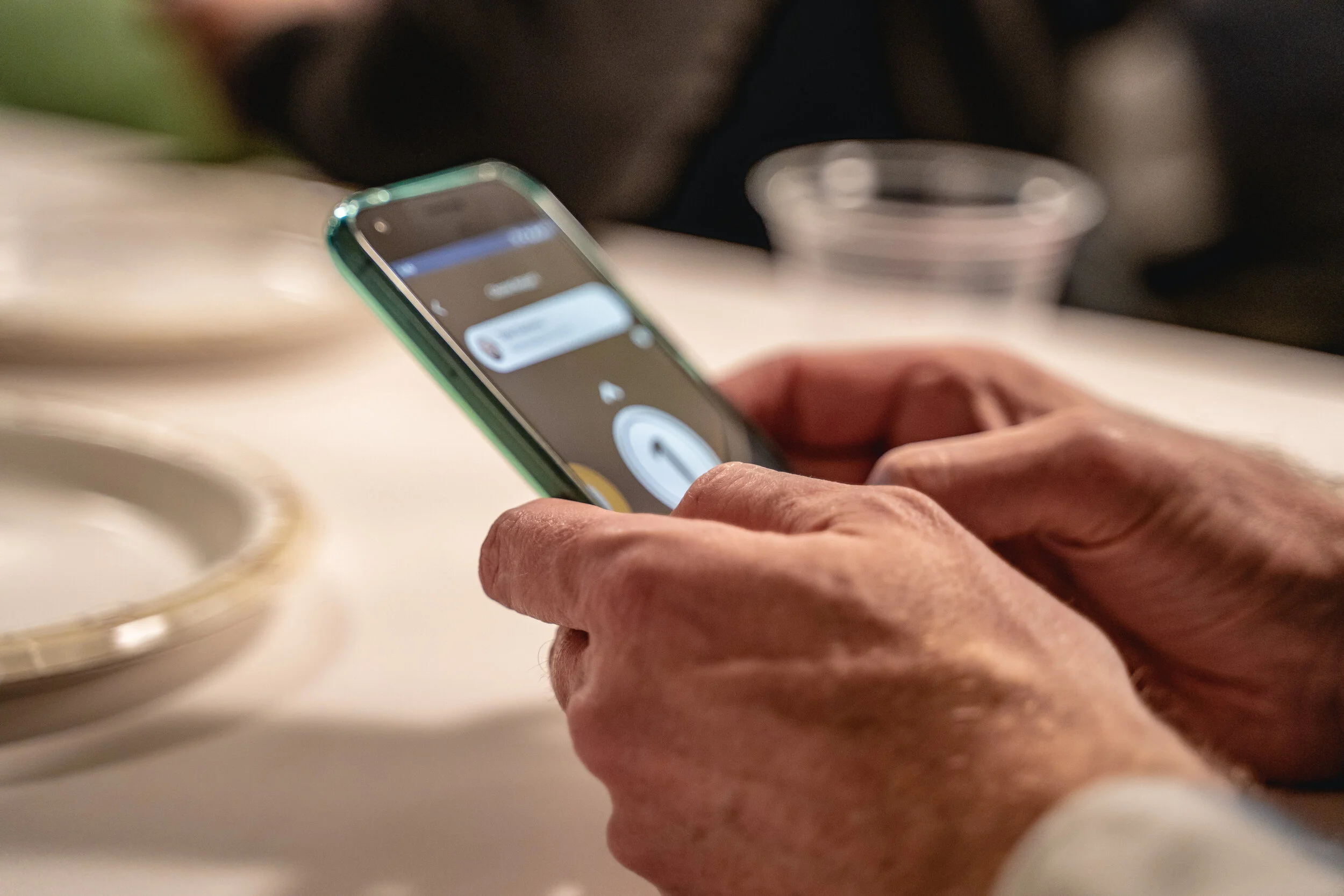Inspiring connection through blockchain
The Problem
Solstice had an old incentive system called Solstice Bucks. Employees used this paper currency to recognize good deeds of other employees. As the company grew, this system fell to the wayside due to lack of budget and structure around distribution.
The Solution
I joined an after-hours passion project of extremely talented developers, product specialists, and scrum masters to create a private Ethereum blockchain to incentivize meaningful connections across Solstice, transacting kudos venmo-style to reward employees for supporting Solstice’s values.
Results
Stats reflect the first three weeks after launch
Employees downloaded
86%
Transactions
2,498
Gold Coins in System
6,080
Rewards Ordered
14
Process
Persona Development
Defining Core Roles
I was curious about the different interactions employees had with the old bucks system. I held one-on-one interviews with employees across the company to develop personas around this problem. It was critical to get the testimonial from people who had experienced the antiquated system, so that I could empathize with how it fell into degradation.
Interview Previews:
Developing Personas
After having these conversations, I categorized the responsibilities and actions into different personas. These would drive WHO we were delivering value to, and would help us define WHAT pain points we were going to alleviate.
Buyer
Granter
Office Management
Click a persona to expand it
User Flows
I needed step into the shoes of these users and understand what it was like interacting with the old system. The user interviews fueled this step in the design process, and allowed me to identify pain points, as well as conceptualize solutions.
Buyer
Granter
Office Management
Click a flow to expand it
Designing an Economy
Economic Model
Many of the pain points helped me understand that a major failing of the old bucks system was a lack of structure. There was distribution, transaction, accrual, and many other themes of an economy, so it was best to design the experience with the lens of designing an economy.
I modeled the incoming and exiting sources of currency, and what entities would be able to transact.
Once that was understood, I created a rough estimation of the economy scale, to make sure that Solstice had a budget and expectation for distributing reawards to employees.
Sketches and Wireframes
User Flow and Sketches
I created a simple user flow helped to illustrate the structure of the experience. From there, I explored ideas of what each screen could be.
Digital Wireframe
Quickly mocking up the ideas in Sketch allowed me to work easily with different components, allowing me to explore visual and functional structure quickly.
Exploratory Designs
My next challenge was to expand upon these wireframes to explore alternate structures, visual treatments, and interactions. I conducted daily usability tests with rapid prototyping, integrating daily feedback from real users.
Not Just a Numpad
When a designer initially thinks “How will a user enter how many coins they want to send?”, the easy answer is “Use a numpad! That’s how we enter numbers!”
I thought it was a simple solution. When I put the designs and prototypes in front of users, they liked it. Feature complete, right? Wrong.
While a numpad SOLVED the problem of entering in an amount of coins, it wasn’t the BEST solution. Historically, employees had only ever given 1 buck for any action, sometimes 2 when the kudos was deserving.
Using a numpad gave the user way too much functionality. The amount of coins sent would rarely deviate from 1. There was a better solution here, and I was curious to find it.
Coin Confusion
The other point of dissonance was selecting which ‘bucket’ a user was giving coins from. The silver/gold coin system was new to users, so there was a lot to educate around that. I struggled with a design that communicated which bucket was selected, since text selectors abstracted the visuals and shapes associated with the new coin types.
New Numpad, Who dis
I had to go back to the drawing board. The home page had been refined to this really intuitive swipe gesture to check your coin amounts. It felt good. I wanted to bring that to the amount screen.
After a lot of iteration, it finally clicked. Mirroring the coin type from the home page. Users understood it, and it was the best method to convey which coin type is selected to give.
To increment, a user could use a date selector-type swipe gesture, or click on the up or down chevrons.
I tested this with users, and it was a resounding success. I animated the interaction in Adobe XD, and reviewed it with developers for handoff.
Ride the Wave
While I was in the headspace of animating interactions, I thought about what else could be brought to life through animation. Solstice believes in riding the wave of innovative technology. It was important for this experience to be personal to the business that enabled it, so I experimented with ways to integrate oceanic and aquatic microinteractions into the app. One of the best examples was transforming the divider on the home page into a multilayered ocean wave, shown below.
Interaction Demos
Coin Selector
Wave Animation
Launch
Bucks Exchange Program
The pain points had been solved, and we were ready to deliver the value of our solution. We launched the app.
I organized a bucks exchange program so that longtime users of the old system didn’t feel like their bucks were wasted. Anyone could submit up to a max amount for currency exchange.
For the remaining bucks that people had, I came up with the idea of a raffle. Each buck equated to 1 ticket, and there was no submission limit. It was fascinating to learn that not everybody wanted to min-max the exchange, and some just threw all of their bucks into the raffle, eager about winning the prizes.
Launch Party
Everybody’s Doing It
The reception of the app was more than we could have wished for. Over 86% of the company had downloaded the app in the first three weeks, and there were thousands of transactions weekly.
One problem that I was rapidly aware of was the depletion of our initial budget proposal. The rate of the economy was assuming a much lower adoption and usage rate than we experienced in the first few weeks.
Iterative Economy
Luckily, this was something that I was prepared for. We designed the system in such a way that we had control of the accrual rates and injection of value. I had a hypothesis for modifying the value, and after the first few weeks, we had enough data to support that.
The accrual rate was changed, and the growth of the economy stabilized to rates that supported our budget. To mitigate user dissatisfaction, we’d be very upfront since launch about the iterative nature of the accrual rates. I was delighted to discover that once we modified the accrual rate, it had no negative impact on usage of the app.
Seeking Surfboards
I was fortunate enough to be invited on the Solstice Podcast “Seeking Surfboards”, a platform where Solsties (our name for people at Solstice) are able to tell stories of their experiences and disseminate the knowledge of our day-to-day challenges.
Feel free to take a listen!
Solstice Coin Meetup
We were finally ready to demonstrate and share the platform we’d built with the design and blockchain community as a whole. Working with recruiting and outreach, we invited C-Suite members from top financial companies, blockchain enthusiasts, and technologists from across a variety of industries. I was one of a panel of four that gave a demonstration of our launched platform, and told the story of our project from inception.
It was a great opportunity to connect with other passionate professionals, and we were able to generate new business interest and showcase our expertise as a company.



